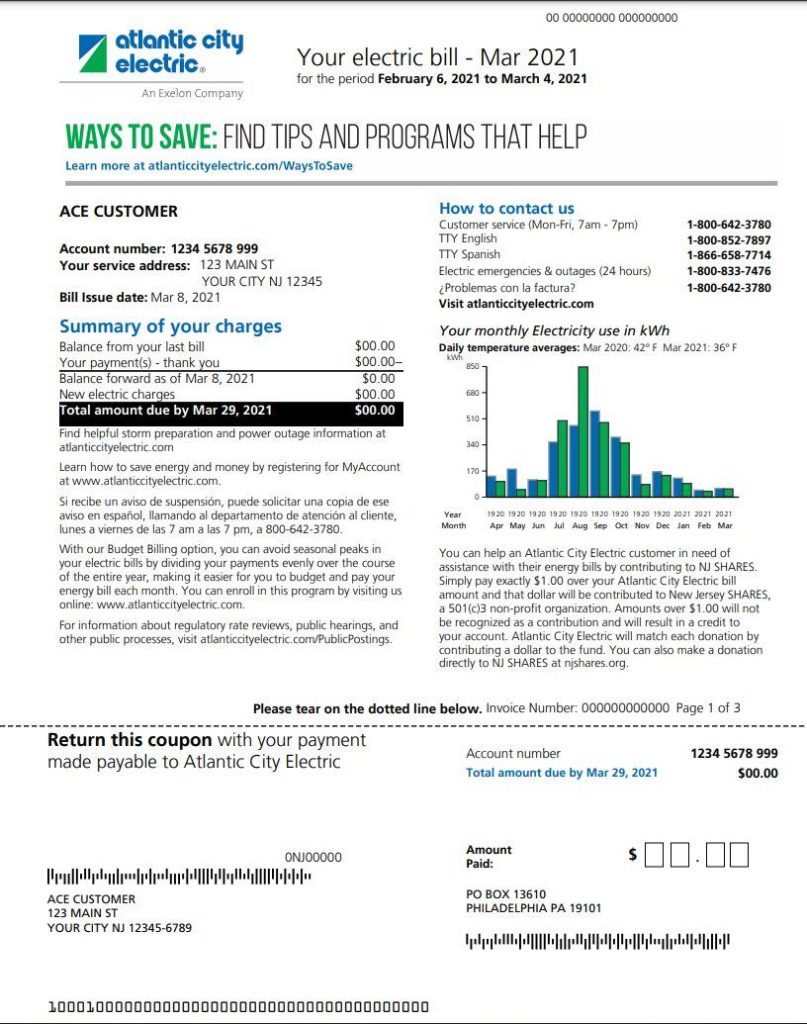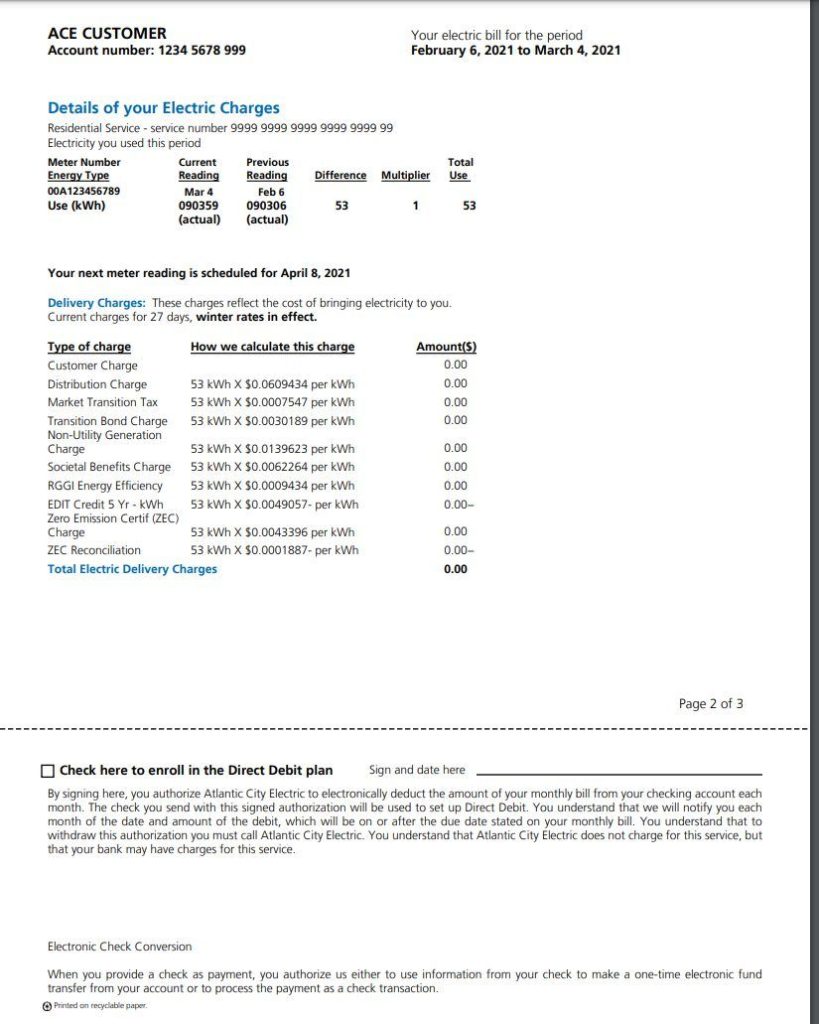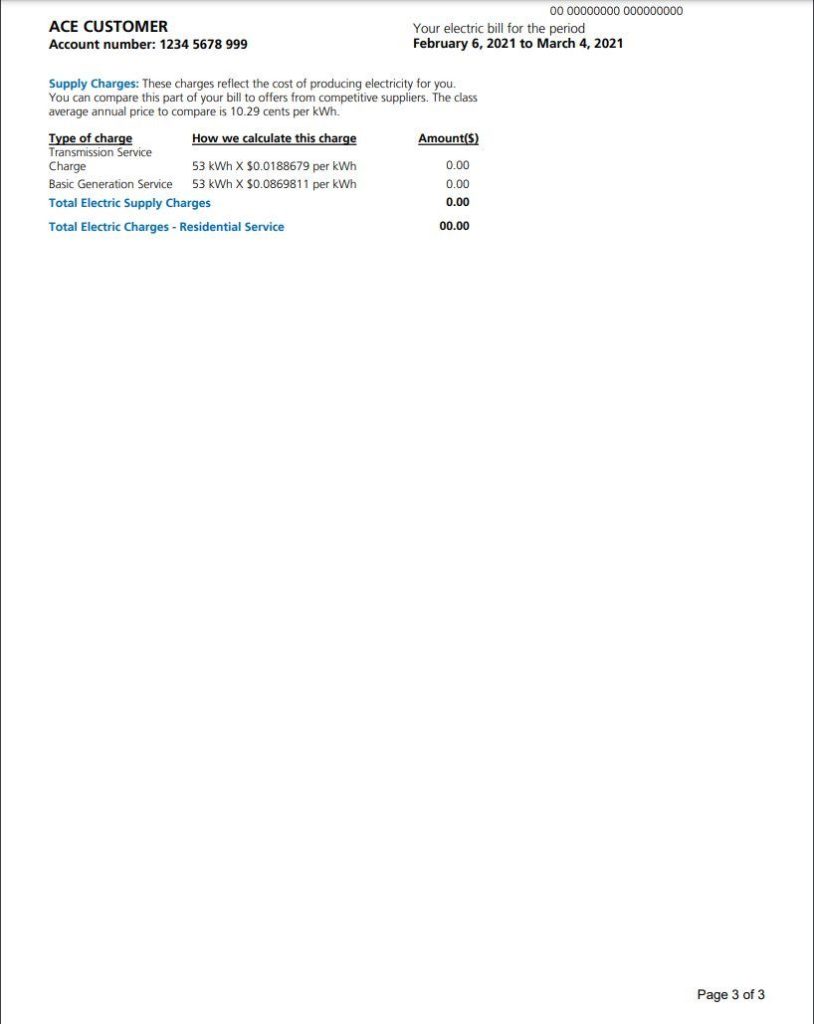The browser you are using is not supported. Please consider using a modern browser.

A Guide to Breaking Down Your Atlantic City Electric Bill
Explaining the Price to Compare (PTC), Delivery & Supply Charges
Table of Contents

Key Takeaways
- An Atlantic City Electric (ACE) bill is broken down into two main sections: Delivery charges (the cost to deliver electricity, which is fixed by ACE) and supply charges (the cost of the electricity itself, which can vary depending on your provider).
- The PTC is the default supply rate from ACE, which can vary by rate class, usage, and time of year. Customers can use this rate as a benchmark to compare and potentially save money by switching to a third-party supplier with a lower rate.
- Key information to locate on your bill includes your account number and residential service number for switching providers, and a 12-month usage history chart to help you track and manage your energy consumption.
- ACE also offers a "Whole Home Energy Assessment" at no cost, where a professional evaluates your home's energy use, installs free energy-saving products, and provides recommendations for larger upgrades with potential rebates.
As an Atlantic City Electric (ACE) customer, there’s a great deal of information contained within your AC electric bill. It can often feel like decoding a puzzle, but understanding its key components is crucial for managing your household budget and making informed energy choices.
Knowing the different components of your electric bill, from the account number location to the difference between the supply and delivery rates, can help you make better decisions about your electricity. This is especially the case if you want to determine if you should switch electricity providers and potentially save on your electric bills now or in the future.
Below you will find an in-depth synopsis breaking down all of the essentails contained within your Atlantic City Electric bill and what each line item detailed means.
What is the Atlantic City Electric Price to Compare?
The Price to Compare (PTC) is the default electricity supply rate charged by your New Jersey utility company to customers who have not chosen a third-party electricity provider. For residents receiving electricity under Atlantic City Electric the PTC is a bit more convoluted as there is more than one set price depending on your rate class, usage and time of year.
- Residential Service Rate: This rate class is divided into two usage types. One for home owners whose usage is 750 kWh per month or less and one for over 750 kWh per month.
- Electric Vehicle Residential Rate: This is for residents who own and charge an electric vehicle at their home. The rate is also usage based with one tier for usage 750 kWh per month and under, and a different rate for over 750 kWh per month.
- Time of Use Rate: Individuals can enroll in a time of use (TOU) and their rate varies by time of day. With peak usage hours being inflated and off peak hours below residential service rates.
- Time of Year: The last component of the Atlantic City Electric price to compare is the season. There are summer rates which run June-Septemeber and winter rates which are from October-May.
Here is the current Price to Compare Chart effective June 2025 for Atlantic City Electric:
| Rate Class & Usage Type | Summer Charge per kWh | Winter Charge per kWh | Annualized |
| Residential Service 1-750 kWh | 17.92 | 18.79 | 18.55 |
| Residential Over 750 kWh | 18.92 | 18.79 | |
| Electric Vehicle Equivalent Residential Rate 1-750 kWh | 17.92 | 18.79 | 18.55 |
| Electric Vehicle Equivalent Residential Rate Over 750 kWh | 18.92 | 18.79 | |
| Residential Service TOU On-Peak | 23.54 | 26.26 | 13.93 |
| Residential Service TOU Off-Peak | 12.94 | 12.73 |
1. Visit Atlantic City Electric’s website for more details on their Price to Compare Chart
2. Annualized price based on 4 months Summer Rates (Jun-Sept) and 8 months Winter Rates (Oct-May)
Shop Atlantic City Electric Rates
Understanding Your Atlantic City Electric Bill
There are three specific aspects of your electric bill that you should be familiar with.
1. Bill Details: Electric Delivery vs Supply
The bill details section lets you see a breakdown of your total electric bill and where your money is going. The two large categories that all charges fall under are delivery charges and supply charges.
- Delivery Charges: These charges support the delivery of electricity to your home and go to ACE. These charges do not change if you switch electricity providers.
- Electric Supply Charges: These charges are for the electricity you used and go to your electricity provider. These charges can vary depending on your electricity provider.
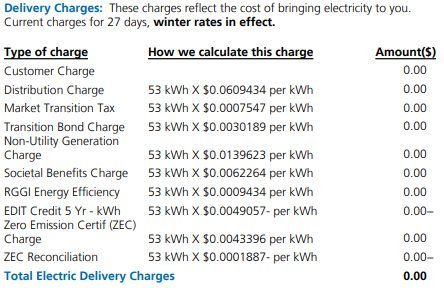

This is also the section to find your electricity supply rate which is what you use to compare electricity plans to determine the cheapest option for you. You can find this rate under “How we calculate this charge” in the Supply Charges section.
2. Your Account Number & Residential Service Number
Above the breakdown of your delivery charges on the second page, you can find your account number and your residential service number. If you plan on switching electricity providers, you will need one of these numbers to make the switch.
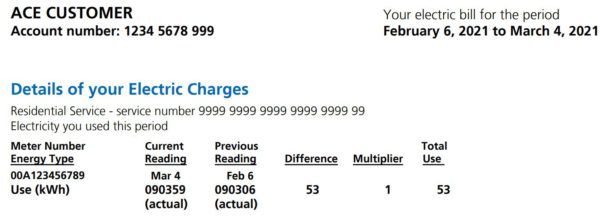
3. Usage History
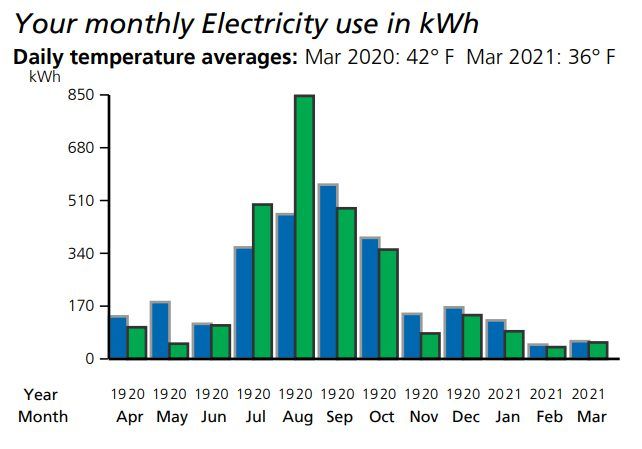
On the right-hand side of the first page of your Atlantic City Electric bill, you will find your usage profile over the last 12 months. This shows you how much electricity you have used each month, and can be helpful when determining how much you may use in the future.
Sample Atlantic City Electric Bill
Here’s a sample electric bill from ACE. Click on any of the images for a larger preview:
Where To Find Your Atlantic City Bill
If you want to find the Atlantic City Electric bill payment page, you can do so by logging into your account on their website.
If you have any trouble, call Atlantic City Electric customer service at 1-800-642-3780.
How to Lower Your ACE Bill
Atlantic City Electric (ACE) offers a “Whole Home Energy Assessment” as part of its energy efficiency programs. This program is designed to help residential customers understand how their home uses energy and to identify opportunities for savings, all at no additional cost.
Here’s a breakdown of what the assessment includes:
- On-site Evaluation: A certified energy analyst will visit your home to conduct a thorough walkthrough. They will check for things like insulation levels, air leakage around windows and doors, and the efficiency of your heating, cooling, and water heating systems.
- Immediate Energy-Saving Products: During the visit, the analyst may install a variety of energy-saving products at no charge. This can include LED bulbs, smart power strips, efficient-flow showerheads, and faucet aerators to help you start saving energy immediately.
- Customized Report and Recommendations: After the assessment, you’ll receive a report detailing the findings and providing personalized recommendations for larger energy-efficient upgrades. The report will also include information on available rebates and incentives from ACE that can help you pay for these improvements.
ACE offers a variety of energy assessment programs, including the “Whole Home Energy Solutions Program” which may offer rebates of up to $6,000 for qualifying home improvements, and the “Home Weatherization Program” for income-eligible customers, which can provide up to $14,000 in upgrades at no cost. You can schedule an appointment for the no-cost assessment through ACE’s website or by phone.
In addition to completing a home energy assessment ElectricityRates.com offers competitive rates from top energy suppliers. Enter your ZIP Code at the top of this page to access our user-friendly Marketplace. You’ll see great rates offered by leading providers so you can choose the best and most cost-effective plan for your energy needs.
